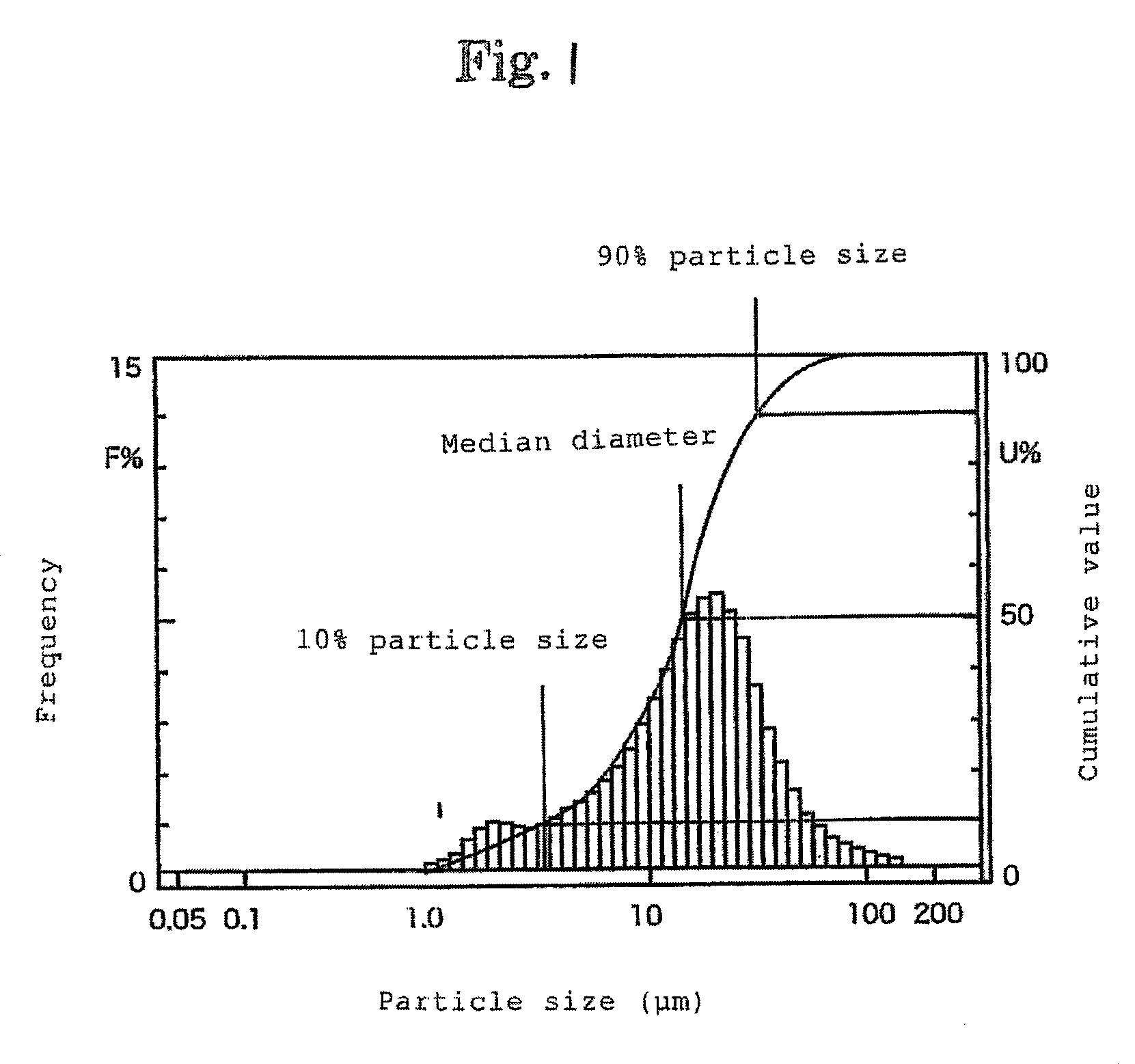Refractory mortar cured material
a technology of refractory mortar and cured material, which is applied in the direction of ceramicware, bandages, other domestic objects, etc., can solve the problems of fine cracks, insatiable, and shrinkage differences, and achieve the effect of suppressing the pore size fluctuations of refractory mortar cured materials, excellent durability, and effective suppression of crack propagation
- Summary
- Abstract
- Description
- Claims
- Application Information
AI Technical Summary
Benefits of technology
Problems solved by technology
Method used
Image
Examples
examples
[0022]Examples of the invention are described below.
[0023]Examples of refractory mortar shown in Table 1 were prepared, and the mortar was applied on the surface of ceramic refractory material of cordierite, and the refractory mortar cured material was formed, and the pore size was measured by image analysis. The characteristics were measured in these refractory mortar cured materials, and the results are shown in Table 1. The crack initiation temperature was evaluated by drying refractory mortar cured material pieces measuring 60×50×1 mm, at temperature of 40 to 110° C. for 8 hours or more, and each sample was taken out to room temperature from the environments which are heated to various temperatures, and the presence or absence of crack was visually checked, and the temperature at which a crack was observed first was determined as crack initiation temperature. Favorable results were obtained in the examples, and the crack initiation temperature was over 500° C.
[0024]By contrast, ...
PUM
| Property | Measurement | Unit |
|---|---|---|
| particle size | aaaaa | aaaaa |
| pore size distribution | aaaaa | aaaaa |
| pore size distribution | aaaaa | aaaaa |
Abstract
Description
Claims
Application Information
 Login to View More
Login to View More - R&D
- Intellectual Property
- Life Sciences
- Materials
- Tech Scout
- Unparalleled Data Quality
- Higher Quality Content
- 60% Fewer Hallucinations
Browse by: Latest US Patents, China's latest patents, Technical Efficacy Thesaurus, Application Domain, Technology Topic, Popular Technical Reports.
© 2025 PatSnap. All rights reserved.Legal|Privacy policy|Modern Slavery Act Transparency Statement|Sitemap|About US| Contact US: help@patsnap.com

